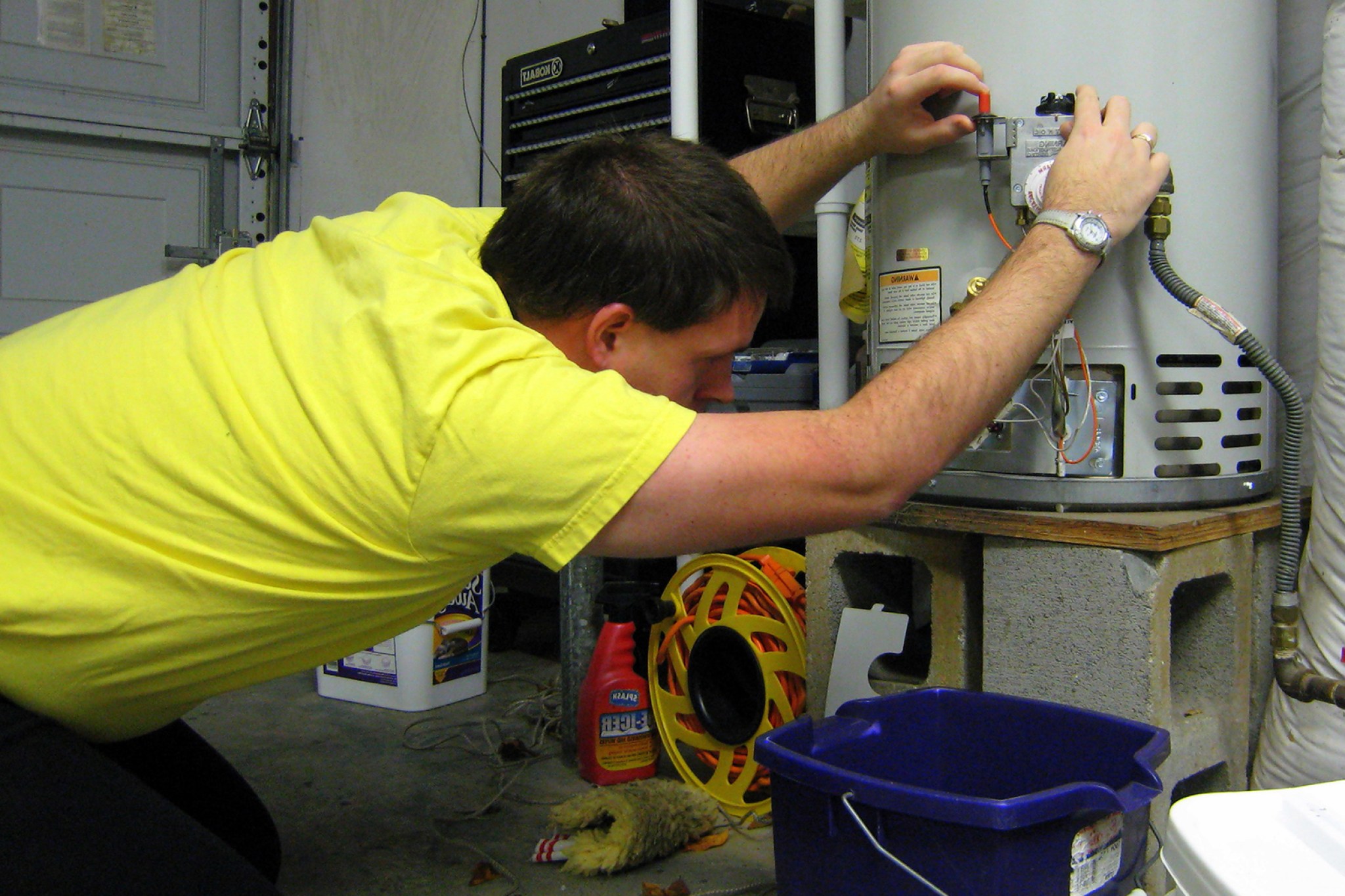Water heaters work hard for you, providing warm baths, clean clothes, and sparkling pots and pans.
So, show your water heater some love by following a routine maintenance schedule that will keep it running for its eight-to 12-year expected lifetime, and perhaps beyond.
Related: Think You Might Need a New Water Heater? How to Know
Maintenance Tips for Water Heaters
Adjust the Thermostat Setting to 120 Degrees
If you set the temperature too high, or at 140 degrees Fahrenheit, your water heater can waste from $36 to $61 annually in standby heat losses — heat lost from the water heater into the surrounding area), according to the U.S. Department of Energy. Turning down the thermostat can also save more from water demand, such as clothes washing, showers, and dishwashing. These savings may amount to more than $400.
Check Clearance
Always maintain two feet of clearance around the appliance unless the manual states otherwise.
Drain About a Quarter of the Tank
Do this a few times a year to remove sediment and debris. Turn off the cold water supply, hook up a garden hose to the drain valve, then run into a bucket until the water is clear. If the water remains cloudy, briefly open the water supply valve to stir up remaining sediment, and drain the tank again. This also makes the unit operate more quietly.
Test the Temperature Relief Valve
Test the valve annually by quickly discharging it two or three times. After the test, keep an eye out for small leaks from the valve.
Examine the Sacrificial Anode Rod
Check this rod every three years by loosening the hex head screw and removing it. A 42-inch zinc-aluminum anode rod with a three-inch nipple fitting costs about $31. Replace the rod if:
- More than six inches of the core steel wire is exposed.
- The rod is less than one-half-inch thick.
- The rod is coated with calcium.
Insulate Older Units
Use a fiberglass jacket to improve efficiency, being careful to avoid contact with the flue (newer units already are insulated; check your owner’s manual to make sure). Also, insulate the hot and cold water pipes.
Prepare Before Leaving Town
Adjust the thermostat on gas heaters to “vacation” setting, which maintains the pilot light without heating the water.
